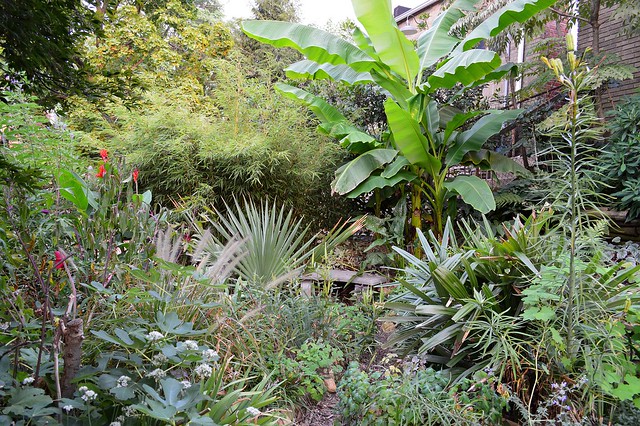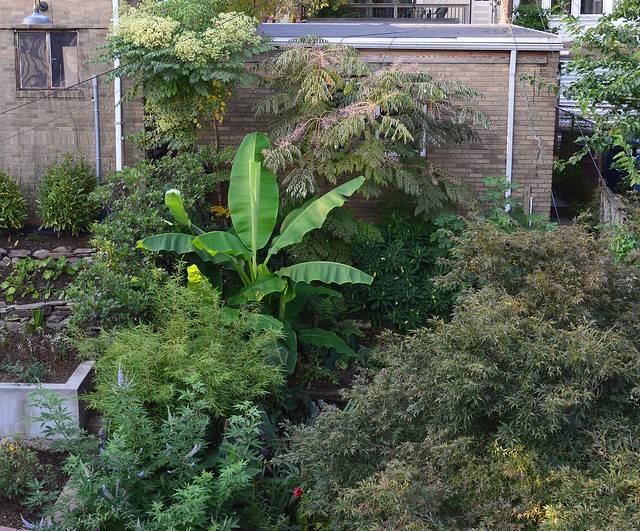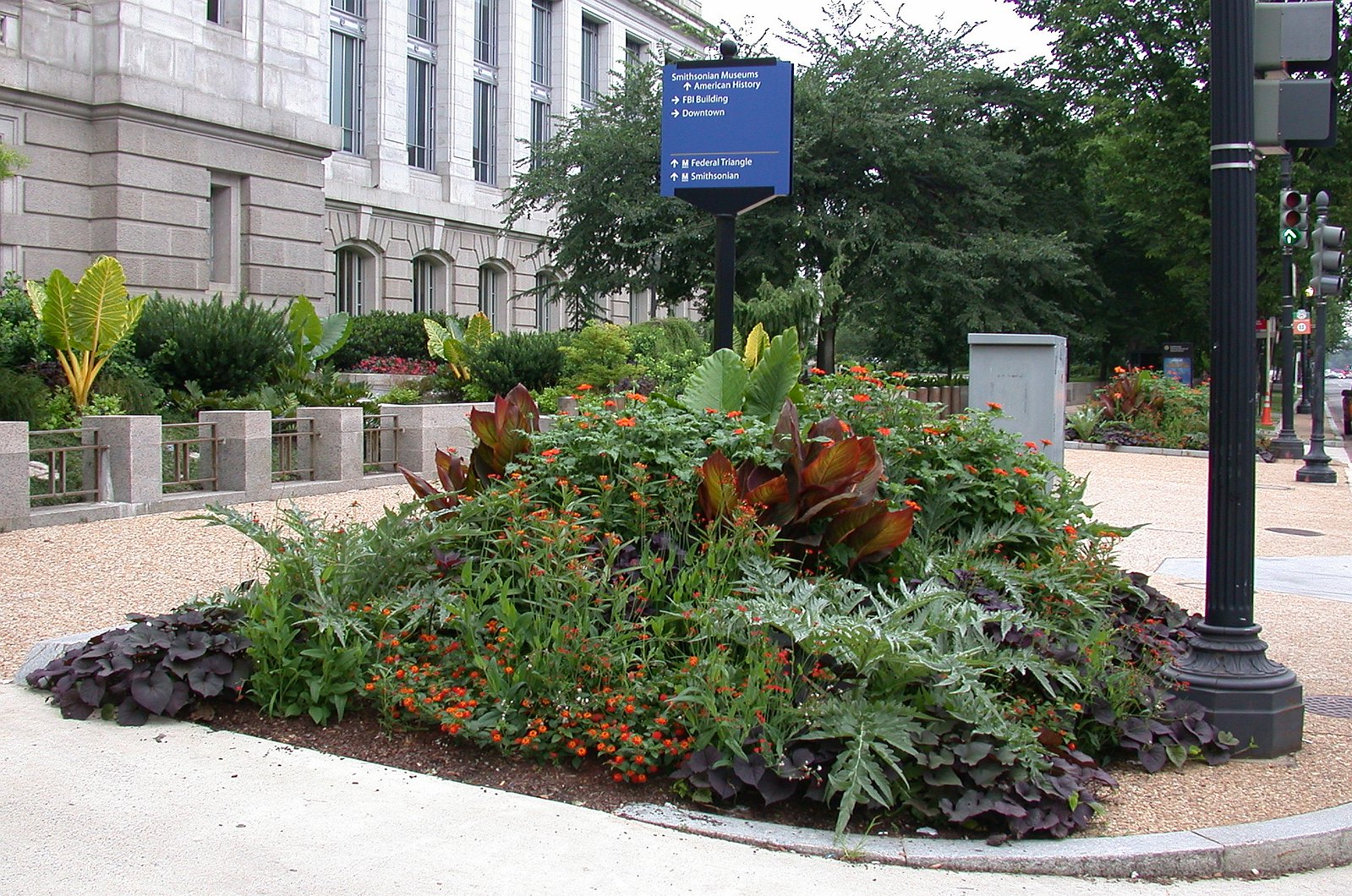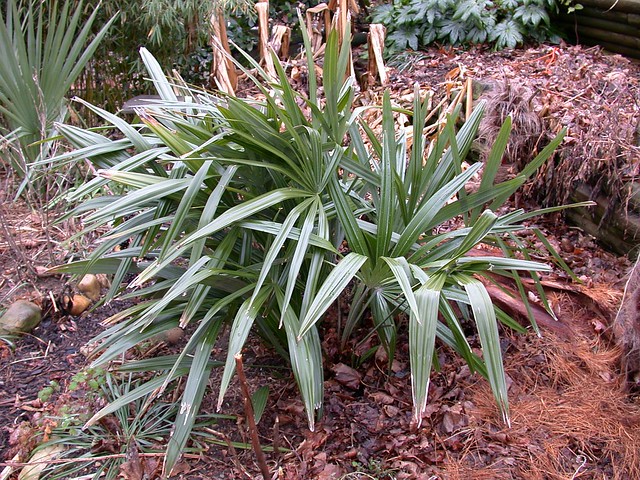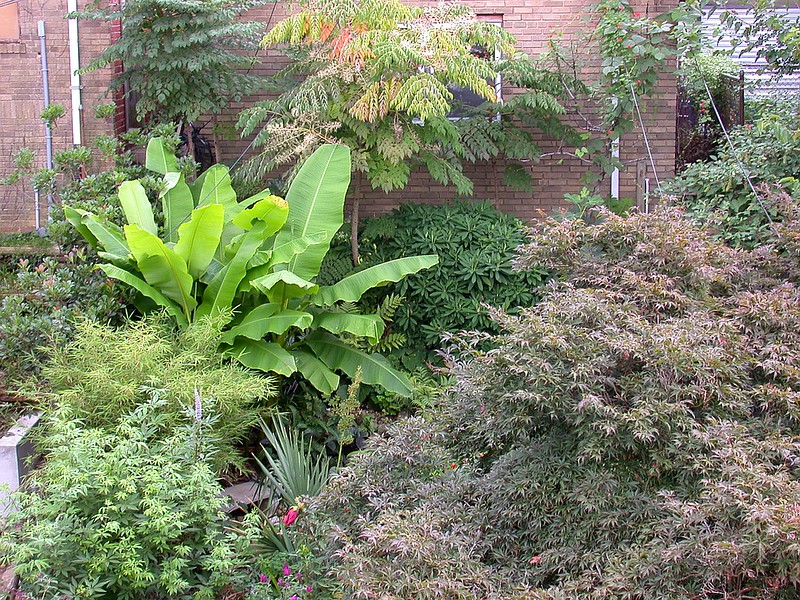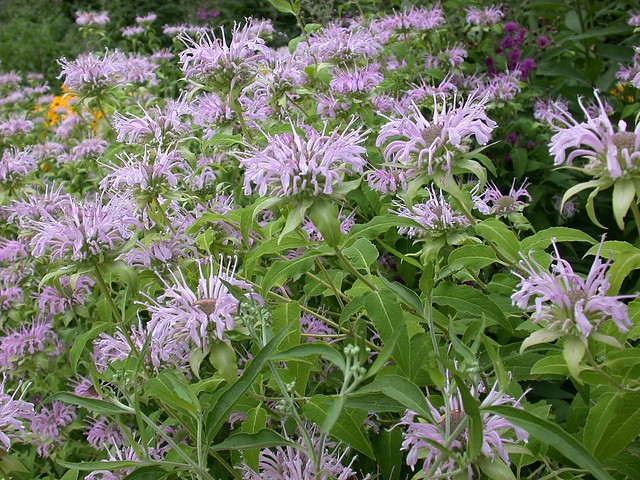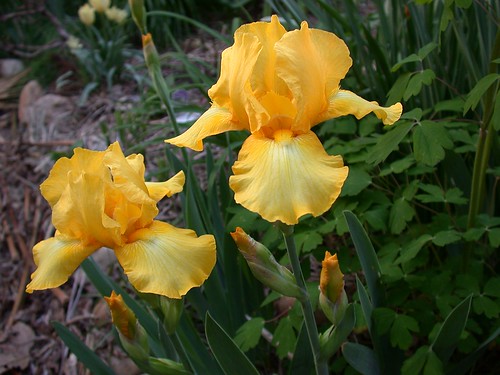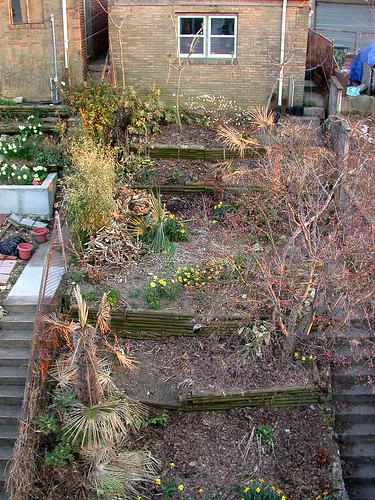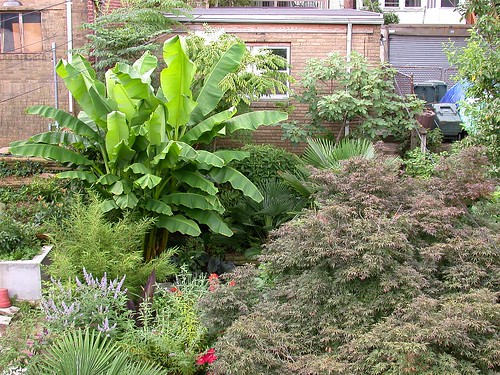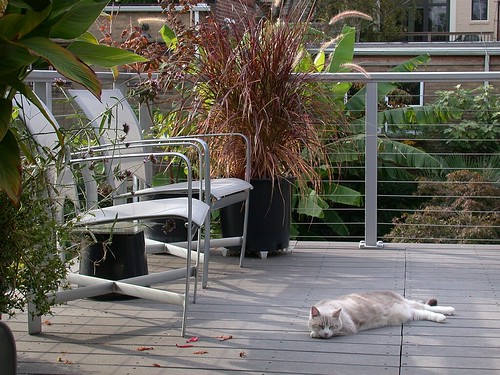
Sunset, January 2014
This is how I'd like to remember January a year ago: a month of breathtaking winter sunsets. Instead, it was a month of breathtaking cold: a
disaster for my garden, and for anybody growing hardy palms or any other marginally hardy plants. Meteorologists had been making dire forecasts for several days, prompting me to ask in early January "
Is this the apocalypse?" I wrote then, "The weather forecasters are starting to talk in
apocalyptic terms, telling us that this event is likely to give us our
lowest temperatures in 20 or maybe even 30 years." Two days later, when I posted "
It was @!#$% cold last night!", we
had recorded DC's coldest temperatures since 1994.
 Trachycarpus wagnerianus
Trachycarpus wagnerianus at 5° F (-15° C), January 7, 2014
The low that morning in my own back yard was about 5° F (-15° C). My
Trachycarpus wagnerianus, which I had grown from seed in 2001 and had been in the ground since 2003, was the first casualty. The damage was immediate and irreversible, with the leaves appearing freeze-dried and never recovering. My other two windmill palms looked almost as bad, but when the weather went above freezing again, they sprang back and showed little damage. I think they would have made it, and maybe the waggie too, if we hadn't gotten several more visits from the "polar vortex" later that month. Although the subsequent lows were several degrees warmer, some of them were more extended and the cumulative damage proved too much for two of my palms. I wasn't surprised to lose my waggie but my
T. fortunei "Nainital" was a more surprising casualty. Even the sole surviving windmill palm,
T. fortunei "Bulgarian", lost all its foliage--even the ones with a bit of green left in them ended up dying completely--but began to push out new leaves come April, and in May it even bloomed.
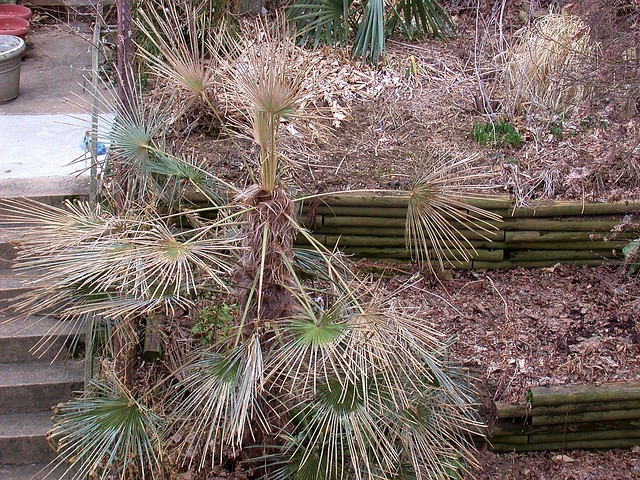 Trachycarpus fortunei
Trachycarpus fortunei "Bulgarian", March 2014
Since then it has recovered a bit, but not nearly as much as I'd like going
into another cold winter. Normally, I wouldn't be worried about windmill palms until lows drop below 10° (-12° C) but in its weakened state, I fear that it won't
take temperatures nearly as cold as last winter's to kill it. But I'm as
determined as I was last year to forgo any protection, to see just how
hardy this plant really is.
 Trachycarpus fortunei
Trachycarpus fortunei "Bulgarian", early January 2015
Last winter killed about half of the windmill palms in the Washington, DC area. 2015 got off to a mild enough start, with a high of 65°
(18° C) just 3 days ago. I was hoping this hinted at a warm winter but no such luck. A year later, almost to the day, we're having a near-rerun of January 2014: the low temperature last night was 12° (-11° C). That was at the upper range of the range that was forecast, so not as bad as it could have been, but I'm just not ready for temperatures like that again. What will the rest of this winter bring? I don't even want to think about it; better to dream about the warm weather, just a few weeks away.
 Edgeworthia chrysantha
Edgeworthia chrysantha, dreaming of spring
I'll end as I began, with a January sunset, this one from just a few days ago.
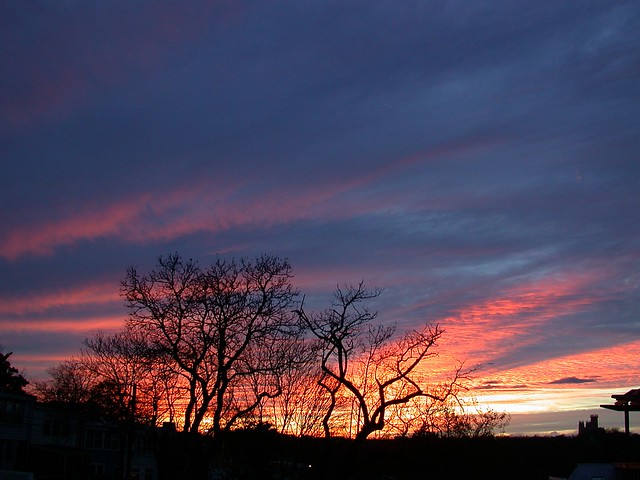
Sunset, January 2015
